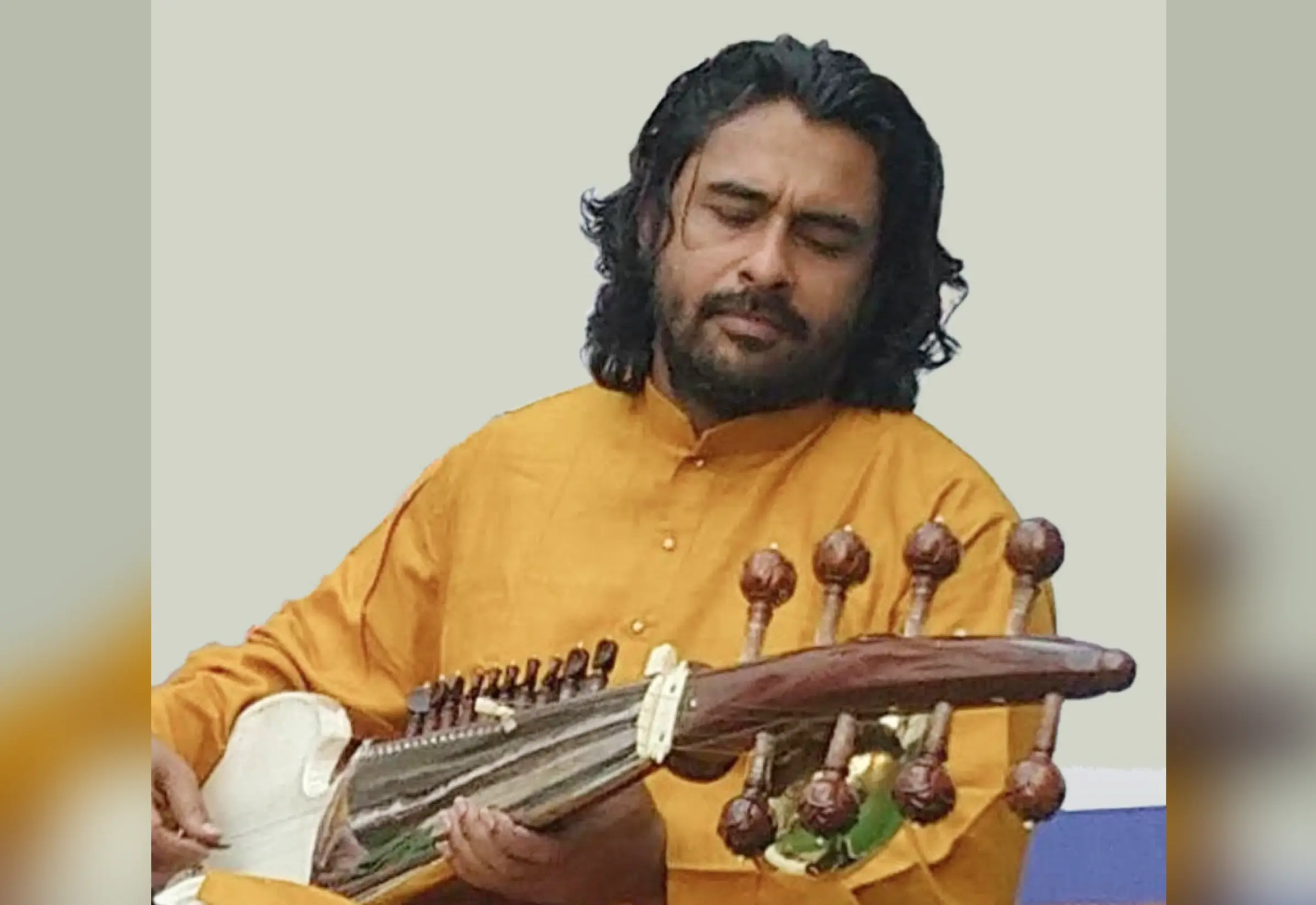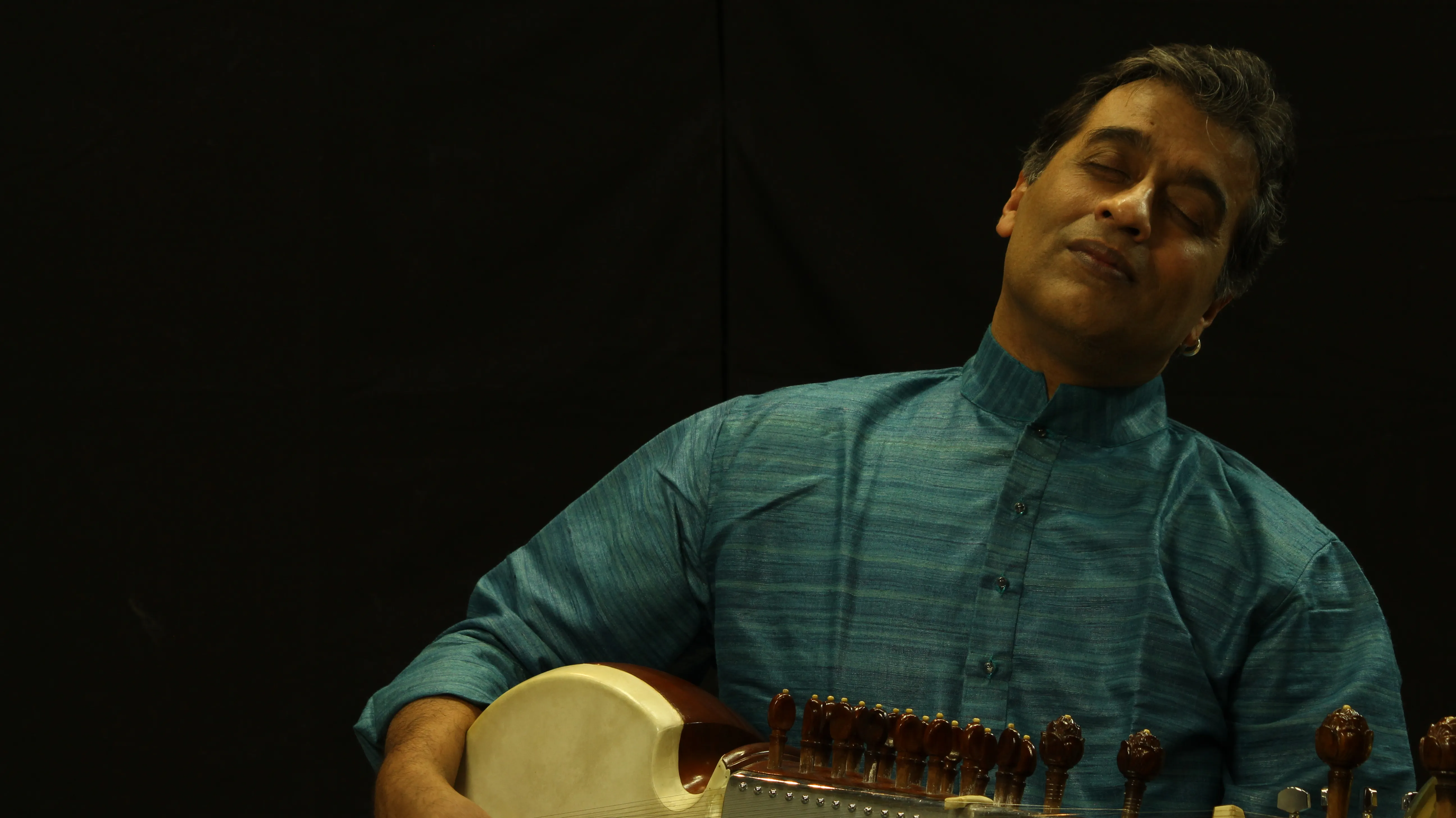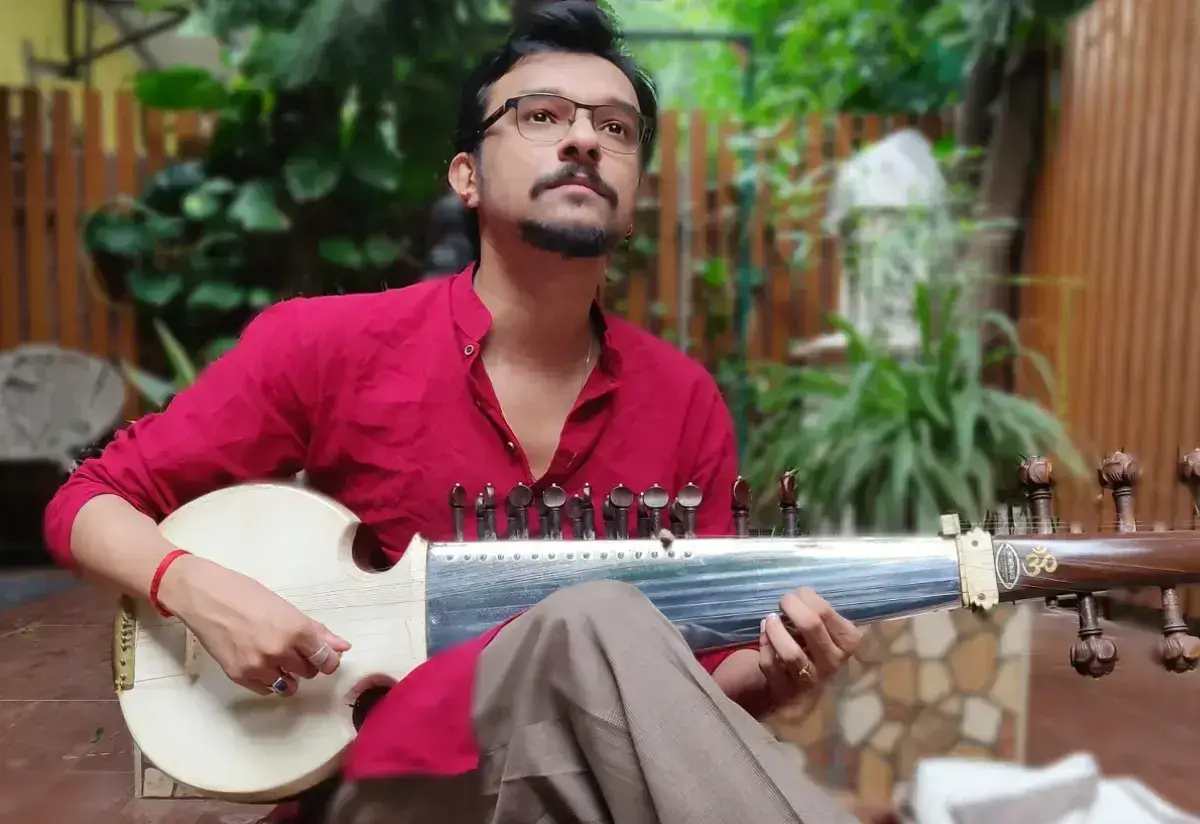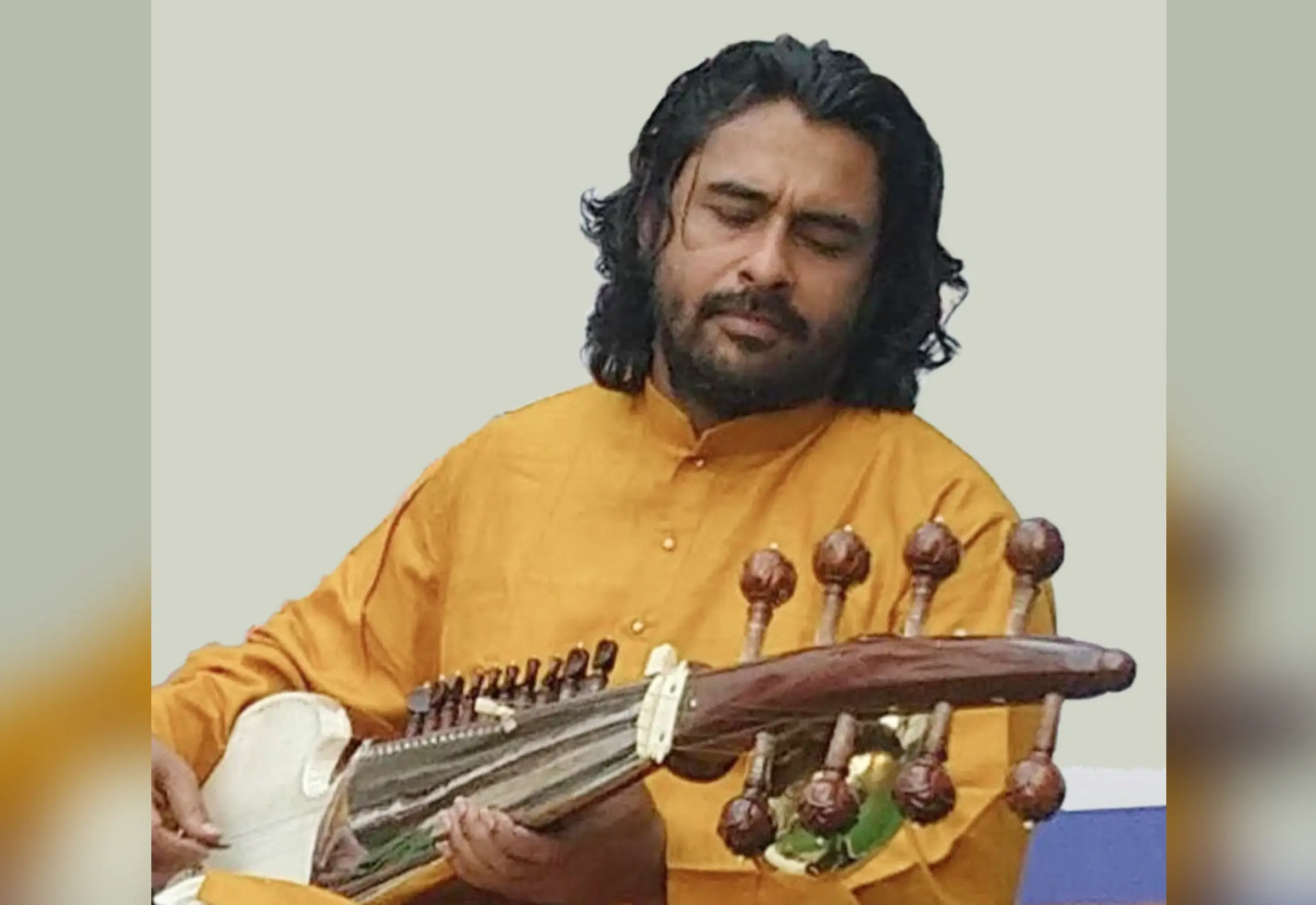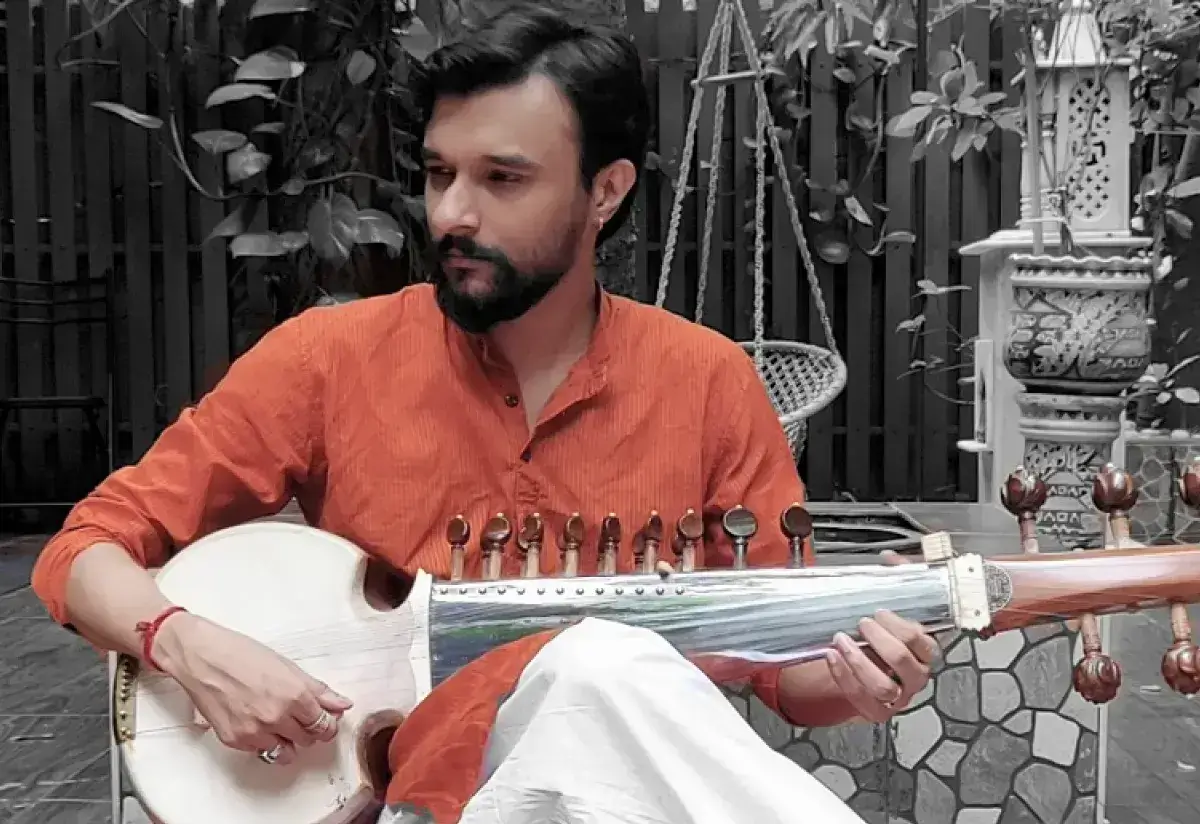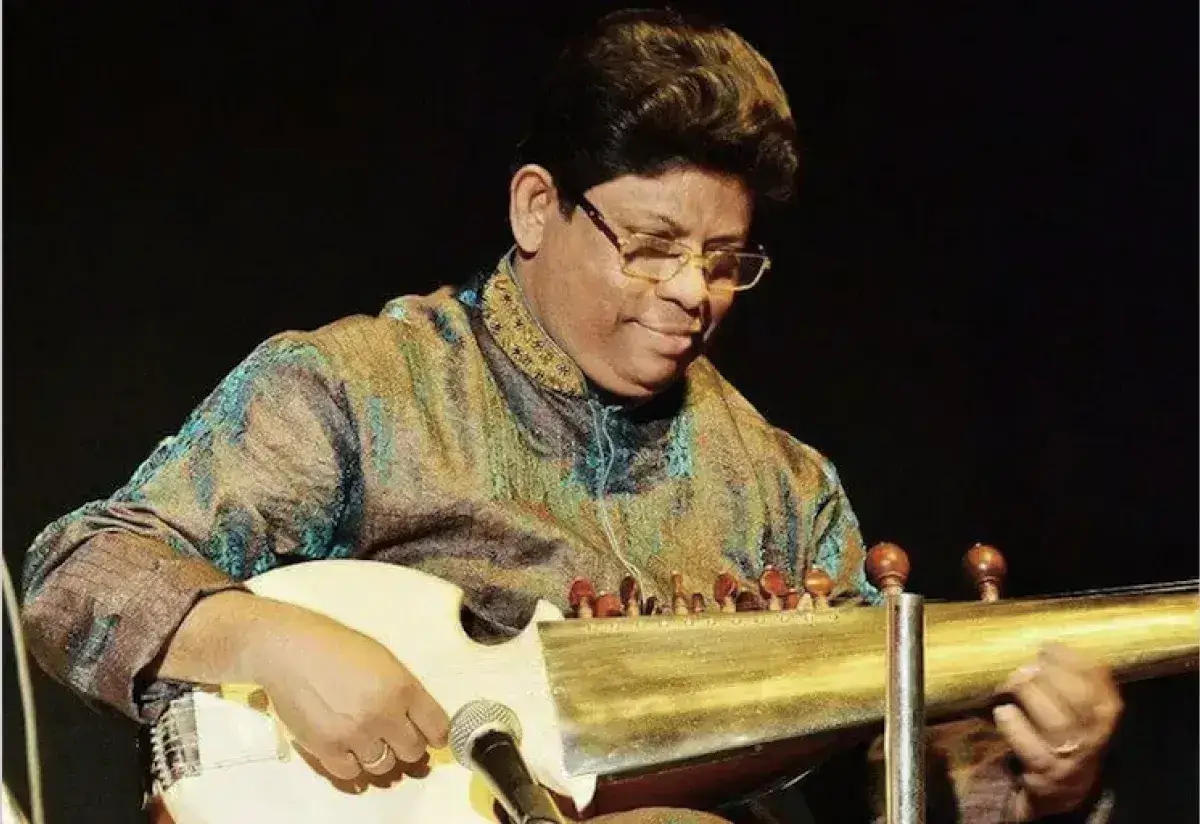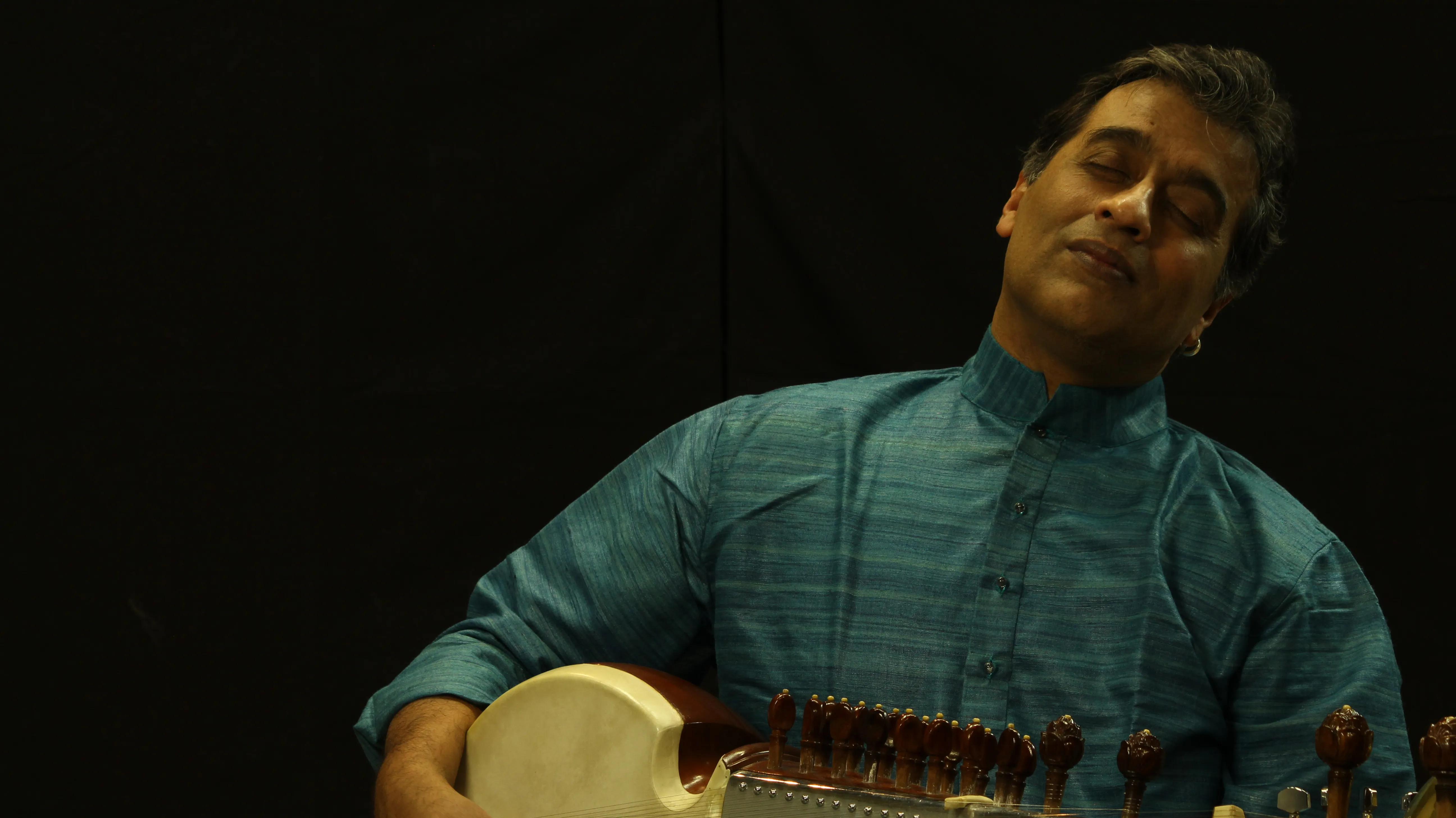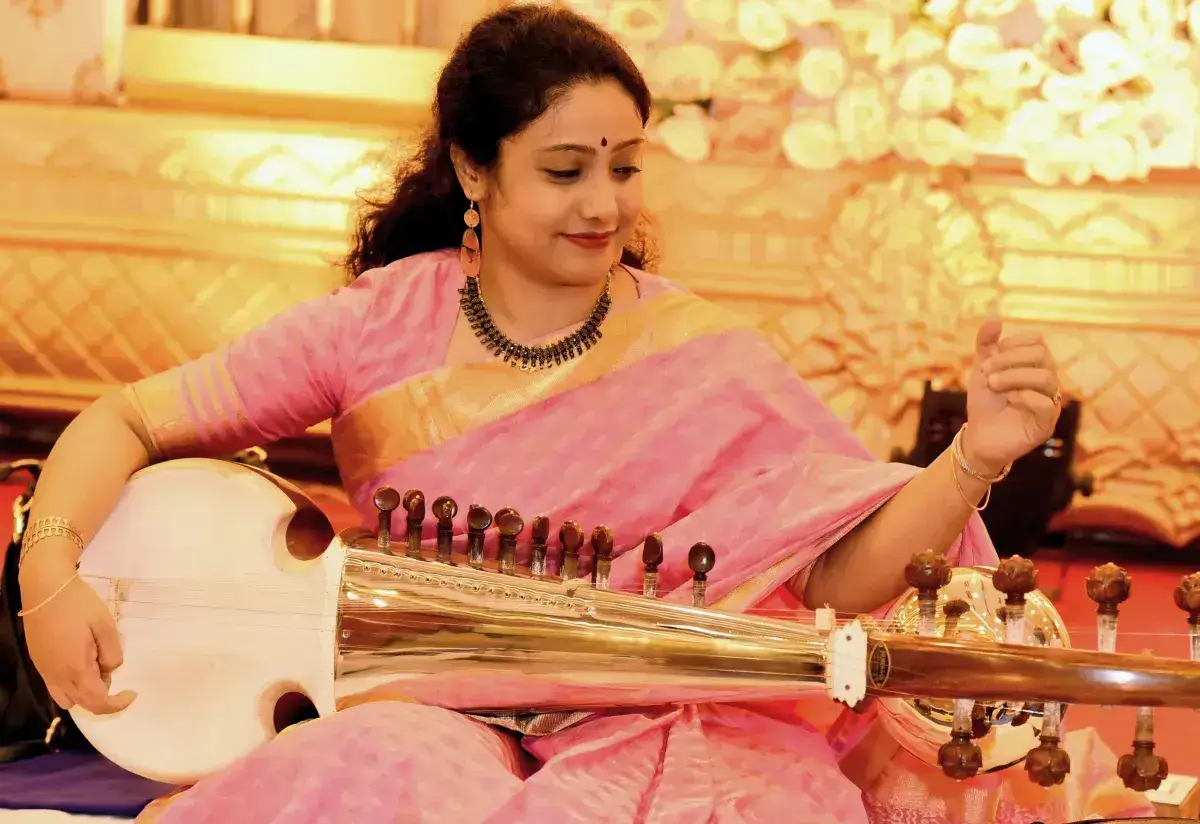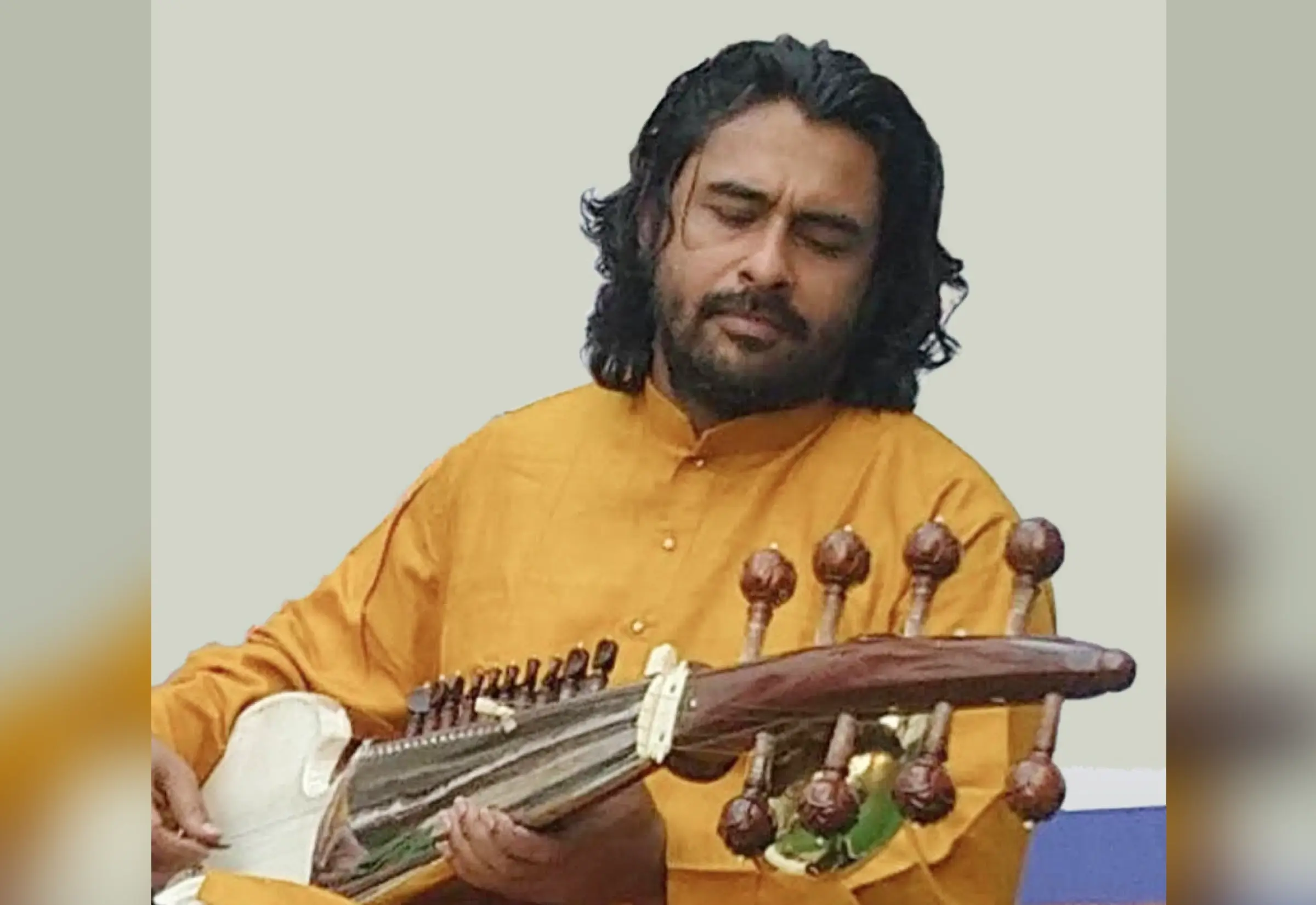Sarod Overview
Sarod is a stringed instrument in the lute family and one of the most popular instruments in Hindustani classical music. The instrument has a deep, heavy sound with a resonant quality provided by the sympathetic strings. It’s also known for its sliding pitches, called meend or glissando, that are characteristic of the beginning of many ragas. One who plays the sarod is called a sarodiya and the word sarod is Persian for song or melody.
The sarod is 100 cm, or 39 inches, long and has a body made from hollow teak, sagwan or tun wood. High-quality instruments have a body, neck and peg box made from a single piece of wood. The resonator has a stretched membrane (usually goatskin) and a bridge made from horn where the strings rest. The bridge is very thin, like that of a violin. The melody strings are stretched across the bridge and the sympathetic strings run through holes drilled into the bridge. The neck of the instrument does not have a fretboard, but rather a polished, steel plate. Some sarods have an extra resonator attached to the peg box, typically made of brass.
The instrument has a few different variations depending on the gharana, or school of music, followed by the player, but sarods typically have 17 to 25 strings that include four to five melody strings, one to two drone strings, and nine to eleven sympathetic, or tarab, strings. The strings were traditionally made from gut or silk, but today are usually made from steel or bronze. The strings are plucked using a triangle-shaped plectrum called a jawa, usually made from coconut shell, ebony or horn. Traditional sarodiyas used wire plectrums, which produced a soft, light tone. The wire jawa was replaced with the coconut shell and similar materials to give the instrument a heavier sound.
History of Sarod Musical Instrument
The sarod is based on the Afghan rabab, with which it shares many similarities. The rabab was developed in the 10th century and influenced many bowed string instruments in Europe and Asia. The sarod was also influenced by the Chitra veena, which is a 21-string fretless lute that appeared in Bharata’s Natya Shastra around 200 BCE. The name for the sarod comes from another veena, the Sharadiya veena.
The rabab came to India in the 16th century and over the next 200 years, it evolved into the modern sarod we see today. The most notable changes were the type of wood it is made from and the steel-plated neck instead of a wooden fingerboard. Also different is the way the instrument is played. The rabab is played with a bow while the sarod is plucked, giving them very different sound qualities.
The sarod rose in popularity in the 1800s, especially in Northern India. The sarod musical instrument was adapted further by Allauddin Khan in the 20th century. The most notable changes at that time were the size of the instrument and the tone. The sarod became larger and tweaks to the design improved sound quality. Descriptions of the instrument from this time period noted that the sarod had a harsher sound than it is currently known for.
While the sarod is a relatively young instrument at 200-300 years old, it evolved from instruments with a much longer history. Additionally, there are many disputed claims about the origin of the sarod. The specific inventor of the instrument is undocumented and it is more likely that many variations on the rabab were created around the same time period. In its tradition of customisation, the sarod continues to be changed and adapted as exponents make adjustments to their instruments and instrument makers try new techniques.
Types of Sarod Instrument
The design of the standard sarod is credited to Niyamatullah Khan and Ghulam Ali Khan, of the Lucknow Gharana and Gwalior-Bangash Gharana respectively. There are slight differences in materials used for these two types of standard sarod but visually, they are nearly identical. This is the version that Amjad Ali Khan and Buddhadev Dasgupta and their followers play. The second brass resonator is not typically included in these variants. Amjad Ali Khan sarods can be identified by their six main tuning pegs.
The sarod instrument designed by Allauddin and Ayet Ali Khan is larger than the standard instrument while keeping most of the basic design the same. The main difference in this version is the addition of four jod strings. This modification makes the sarod perfect for the presentation of alap (improvisation), with the jod strings providing rhythmic background. Allauddin Khan sarods can be identified by their eight main tuning pegs and the second resonator attached to the peg box on the back of the instrument.
Sarod Playing Techniques
The lack of a fretboard means the strings of the sarod must be pressed hard against the neck. This is done in one of two ways: by using the tip of the fingernail to stop the strings or by using the fingertip. These techniques do not alter the quality of sound and are therefore decided based on personal preference of the sarodiya. Followers of Allauddin Khan use the index, middle and ring fingers to stop the strings on the neck, while followers of Amjad Ali Khan use just the index and middle fingers.
There are countless playing techniques that are customized by the player or unique by gharana; however, there are some sarod techniques that are used universally. The most popular playing technique among all sarodiyas is the meend, a glide from one note to another without lifting the finger, made especially easy by the lack of frets on the sarod. Minda is a similar technique but it is used from one note to another for only a single stroke, a shorter version of the meend.
In addition to sliding notes, the fretless fingerboard lends itself to many unique playing methods. Sparsa is a technique where the player stops the melody string with two fingers and lifts one finger from the string immediately after it is plucked. This produces near-simultaneous notes. There are also different plucking methods, including plucking in a downward motion (goti) and plucking in an upward motion (vali).
Sarod Mechanics
The sarod produces several different tones and pitches through the use of multiple types of strings. The melody strings are tuned to different standards depending on the Gharana of the player or personal preference. Sympathetic strings are typically tuned to the notes of the raga being played and are re-tuned for each raga. The strings are attached to tuning pegs that are tightened to raise the pitch or loosened to lower it. The standard sarod has a range of three octaves.
The peg box, which holds the tuning begs, is solid and takes up half the length of the instrument. The tuning pegs of the main strings are on either side of the top of the neck, while the tuning pegs for the sympathetic strings are in two rows to the right of the fingerboard. The pegs themselves are made from wood and can be more delicate than more modern metal tuning pegs. Because the sarod has a skin stretched across the belly of the instrument, the sound it makes can be altered by atmospheric moisture. The skin will be tighter in warmer months and looser in colder months. Both the pegs and the skin must be replaced every few years in order to maintain an optimal sound quality.
Notable Sarod Players
There are many famous sarod virtuosos from the past and present. Below are some of the most talented and well-known modern sarod players from around the world:
- Abhisek Lahiri
- Abhishek Borkar (View his course)
- Amaan Ali Khan
- Arnab Chakrabarty
- Asad Qizilbash
- Ayaan Ali Khan
- Brij Narayan
- Buddhadev Das Gupta
- Dr. Troilee Dutta (View her course)
- Monit Paul (View his course)
- Pandit Abhik Kumar Sarkar (View his course)
- Pandit Biswajit Roy Chowdhury
- Pandit Shekhar Borkar
- Praashekh Borkar
- Pradeep Barot
- Saby Bhattacharya
- Satyaki Banerjee
- Stephen Day
- Ustad Amjad Ali Khan
- Vasant Rai
- Vikash Maharaj
- Wajahat Khan
- Wynne Paris


